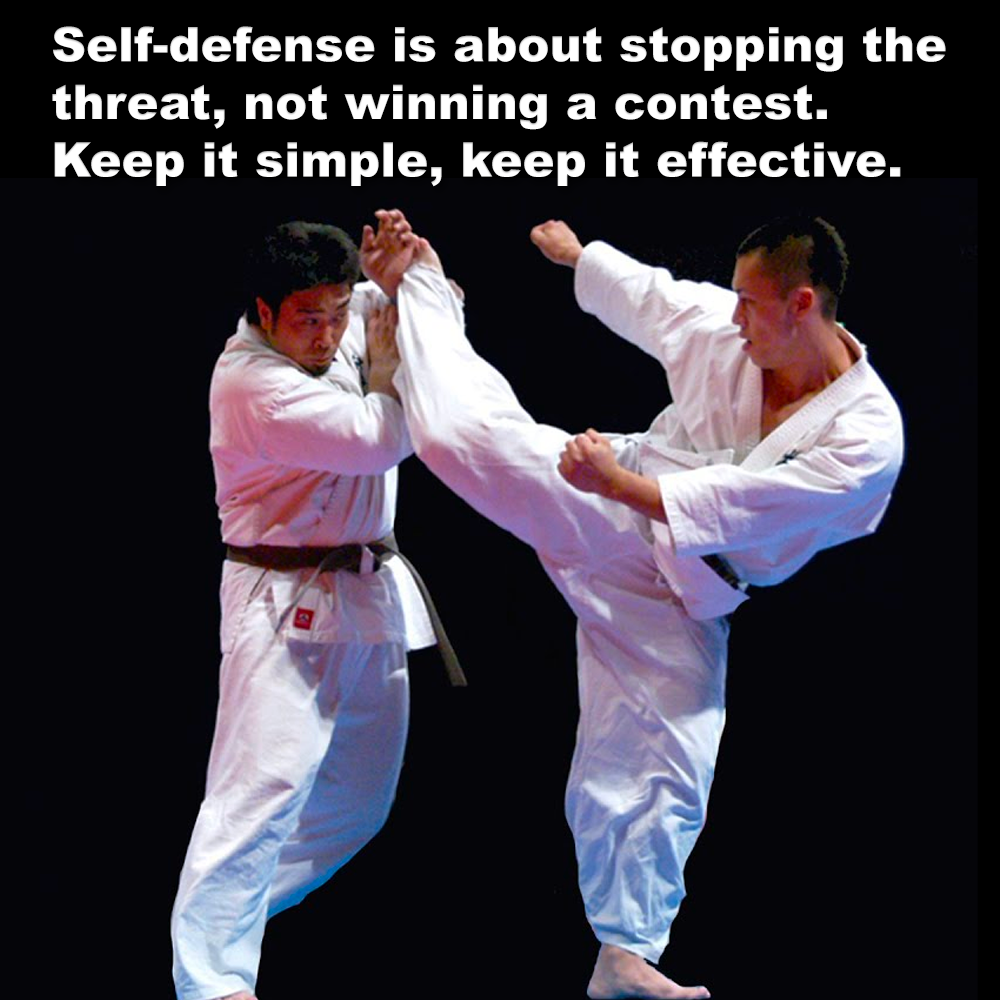
Self-defense is about stopping the threat, not winning a contest. Keep it simple, keep it effective.
Posted by ADAM CARTER on DEC 21, 2023

Self-defense is about stopping the threat, not winning a contest. Keep it simple, keep it effective.
In my younger days, high kicks were a speciality of mine. I was very flexible, often using different high kicks to success in the dojo and in competition. And if you had told me high kicks didn’t work for self-defense, I would have strongly disagreed with you. I know several karate-ka who worked on the ‘doors’ and they used their high kicks to amazing effect.
In the realms of self-defense, high kicks, by their nature, can leave your body exposed and vulnerable to counterattacks. A skilled opponent can easily capitalize on the moment your leg is in the air, with devastating effect.
The chances of landing a clean high kick on an attacker in a dynamic and unpredictable self-defense situation are considerably lower than in the controlled environment of the dojo. Additionally, even if you do land the kick, its effectiveness depends heavily on accuracy, power, and the attacker's agility.
Real-world confrontations don’t occur in open spaces with cushioned mats. There is rough terrain, obstacles, and slippery uneven surfaces can throw you off balance and make high kicks highly impractical.
In real-world scenarios, you are more likely to encounter multiple attackers, and high kicks, require significant focus and wind-up time, being less effective in such situations where agility and quick movements are paramount.
And not everyone has the flexibility, leg strength, or athleticism to execute those high kicks effectively anyway.
Any kick needs to be used in a tactically sound way. The close range, chaotic nature of self-protection means that the space needed is not always available. Stability and mobility are vital, and both are greatly reduced when you take one foot off the floor.
Remember, self-defense is about survival, not winning a tournament. While kicks can be useful in the right context, relying on high kicks can be a dangerous gamble.
Most real situations start close; typically conversation range. Therefore it would be too close to use high kicks when a situation turns physical.
However, kicks can be still be applied in fight at appropriate times; i.e. short kicks to shins, stamps to feet etc.
For self-protection, your goal is always to avoid harm so you should be seeking to create the space needed to escape.
Self-defense is about practicality. You need movements that keep you safe, not anything that may leave you open and vulnerable to further attack.
If you look at the kicks contained within kata (not the modern versions), there is no doubt that any kick found within them would indicate that they were not tactically prevalent as a percentage of 'total' karate movements…. And none of them a high kick.
One of the key aspects to this, in my opinion, is the hand's ability to not only strike but also to grab, pull, lock, and provide a versatile range of movements. The importance of hands in any situation lies in their multi-functionality.
Although grappling is subtly embedded in kata, often appearing as a sequence of blocks and strikes, if these moves were solely about blocking and striking, you might question the apparent scarcity of foot strikes.
Perhaps the reason we don’t see many kicking techniques in kata is that they may have been thought of as included in stepping, moving and turning. The so called; 'kakushite - “hidden techniques”.
Many hand techniques seamlessly transition into subsequent actions that are difficult to replicate with the legs alone. A strike transforms into a grab, allowing for opponent control, or a seemingly simple block unfolds into a joint-lock or a grab-breaker.
The utilization of hand techniques offer unique control over opponents, a dimension that kicks, especially high kicks, cannot achieve.
Finally, in days of old, kicks to the head were only prevalent when an attacker was on the ground. However, in contrast to the past, kicking someone’s head like a football when they are on the floor? Not advisable, I’m sure the law would disagree with that one.
